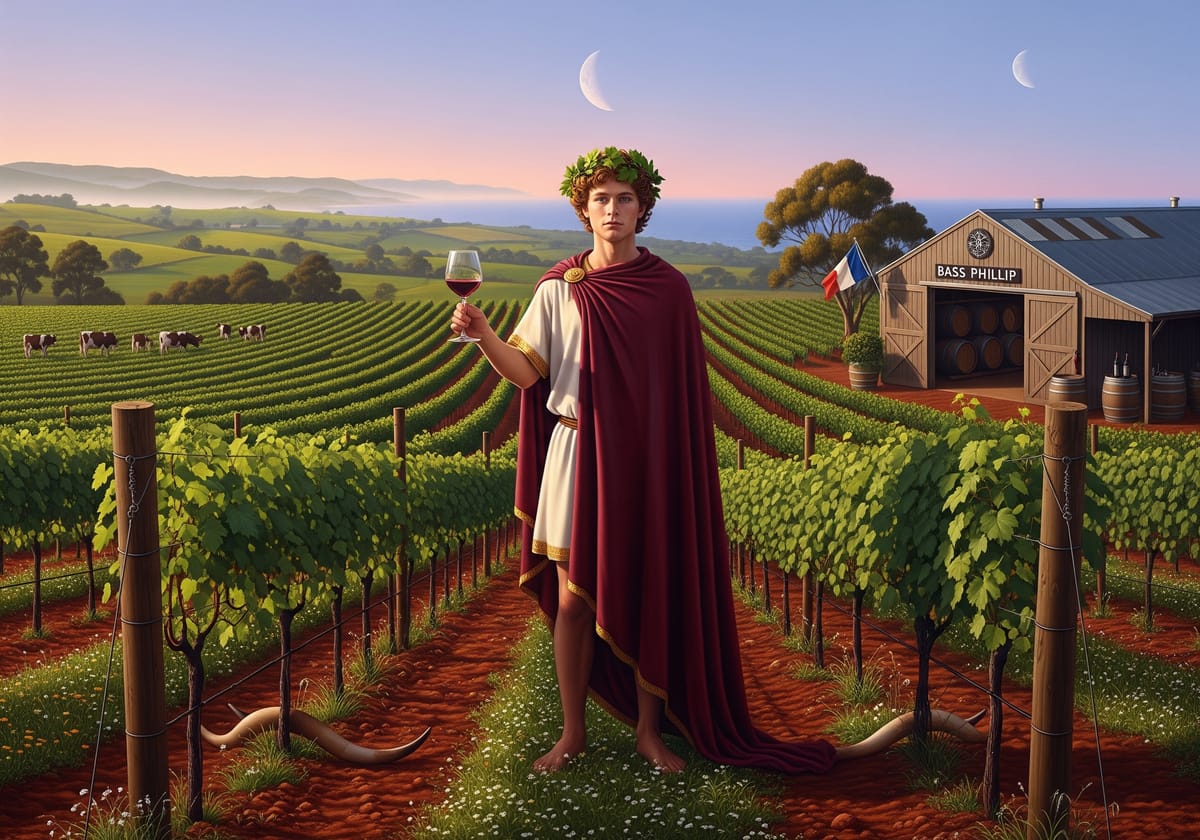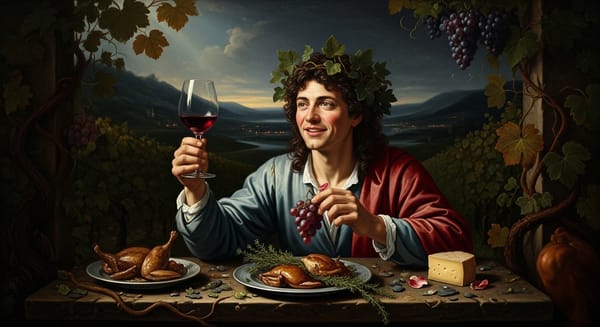Bass Phillip: From Cow Paddock to Cult Pinot How one restless engineer, two colonial explorers, and a Burgundian legend rewrote Australia’s Pinot playbook

Here’s the setup. A Melbourne telecom researcher called Phillip Jones buys a windswept dairy block in South Gippsland in 1979, plants the wrong grapes, rips them out, waits twelve years to release a bottle, and ultimately hands the keys to a star from Gevrey-Chambertin. Bass Phillip isn’t a vineyard story; it’s a 45-year case study in stubborn focus and long-horizon thinking. Pour a generous splash—ideally the Reserve—and let’s sprint through the highlights.
1. 1979 – A Telecom Escape Hatch
- The move: Jones christens the site “Bass Phillip,” nodding to explorers George Bass and Arthur Phillip.
- Early misfire: Cabernet goes in first (Bordeaux dreams die hard).
- Pivot point: Cool, misty nights reveal Pinot Noir’s true calling; the Cab’s days are numbered.
2. Burgundy on Bass Strait
- Soils & climate: Volcanic loam over free-draining mudstone, lashed by Southern Ocean breezes—cool enough to keep acids razor-sharp.
- Densities that scare accountants: ~9,000 vines per hectare, yielding barely half a bottle per vine. Scarcity wasn’t marketing; it was agronomy.
3. Organic in ’93, Biodynamic by ’02
Jones ditched synthetic sprays before “clean farming” became a hashtag. Biodynamics followed: lunar pruning calendars, cow-horn composts, the works. Critics argued. The wines answered—depth, iron-tinged minerality, uncanny longevity.
4. Twelve Years of Silence, Then Thunder
No wines left the property until 1991. When they did, Australian critics scrambled for superlatives. By the mid-2010s, the Reserve Pinot routinely sat in the nation’s top handful of bottles, and secondary-market prices started flirting with Burgundian benchmarks.
5. 2020 – Enter Jean-Marie Fourrier
With no heir apparent, Jones sold majority control to a syndicate led by Jean-Marie Fourrier (yes, that Fourrier). The brief: tighten viticulture, refine cellar work, keep the soul intact. Jones stayed on for a two-year hand-over; the 2021 vintage shows Fourrier’s signature silk layered over Gippsland’s earthy bass line.
6. Why Collectors (and Drinkers) Care
- Scarcity economics: ~20,000 bottles total; Reserve production measured in hundreds.
- Critical headroom: Scores rarely dip below mid-90s.
- Terroir moat: Cool-humid Gippsland microclimate is nearly impossible to clone elsewhere in Australia.
- Succession certainty: Fourrier’s stewardship dials down “founder risk” and adds Burgundian prestige.
7. The Road Ahead
- Climate resilience – experimenting with heat-tolerant Pinot clones and precise canopy tweaks.
- Deep-dive biodynamics – parcel-specific composts, even lower sulphur, micro-ferments.
- Global stagecraft – Fourrier’s distribution muscle opens doors from New York to Tokyo.
Liber’s Takeaway
Bass Phillip proves that obsession, patience, and a healthy disregard for conventional wisdom can turn an overlooked cow paddock into a cult icon. The playbook: macro-patience, micro-speed, zero compromise. If you land a bottle, don’t brag—just pour, swirl, and taste 45 years of single-minded focus. Then raise a glass to whatever lunar cycle comes next.





